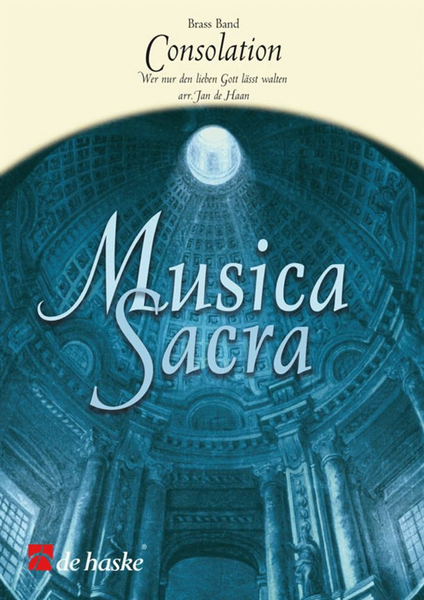Consolation
Wer nur den lieben Gott lässt walten
-
Ships in 2 to 3 weeks
Details
Description
SKU: BT.DHP-1094676-130
Wer nur den lieben Gott lässt walten. Arranged by Jan de Haan. Musica Sacra. Hymns & Chorals. Score Only. Composed 2009. 16 pages. De Haske Publications #DHP 1094676-130. Published by De Haske Publications (BT.DHP-1094676-130).9x12 inches. English-German-French-Dutch.
Wer nur den lieben Gott lässt walten was composed by Georg Neumark in about 1641 and was subtitled ‘Trostlied’ literally meaning consolation song. Songbooks at the time showed the popularity of this song and it is still well-known today partly due to Johann Sebastian Bach’s use of the melody for one of his own chorals. In Jan de Haan’s arrangement the choral is heard twice, once, alternating with the original motif from the introduction and a second time, without interruption, reflecting the composer’s original intention - a song of consolation.
Wer nur den lieben Gott lässt walten wurde um 1641 von Georg Neumark geschrieben. Alte Gesangbücher belegen eine frühe Popularität des Liedes, das heute nicht zuletzt durch Johann Sebastian Bach, der es u. a. für einen Choral verwendete, jeder kennt. In dieser Bearbeitung erklingt der Bach-Choral zweimal: einmal alternierend mit dem Motiv aus Jan de Haans Einleitung und einmal ohne Unterbrechung in einer Besetzung, die der ursprünglichen Absicht gerecht wird: einem Trostlied.
Intorno al 1641, Georg Neumark compone il cantico Wer nur den lieben Gott laesst walten, nel quale ogni strofa esprime la fede in Dio e gli d il sottotitolo di Canto di consolazione. Il cantico ebbe grande notoriet . In questo arrangiamento firmato Jan de Haan, il corale è esposto a due riprese: dapprima preceduto da una breve introduzione seguita da una variazione tra ogni verso, in seguito in una trama continua che, fedele al sottotitolo originale, cerca nella sua azione la consolazione.

 Share
Share